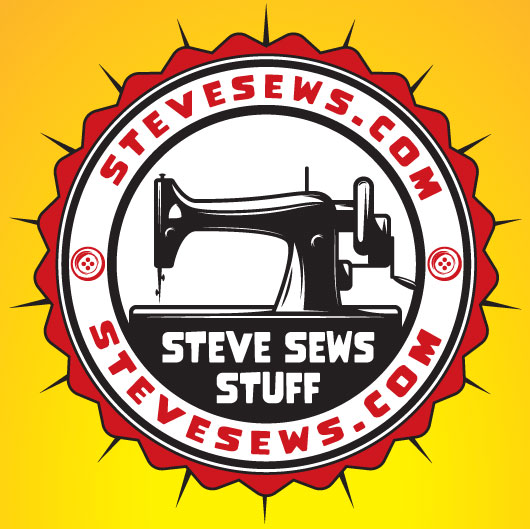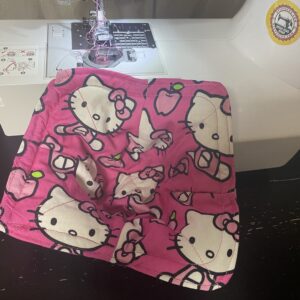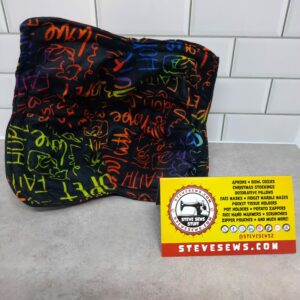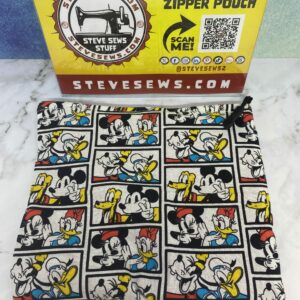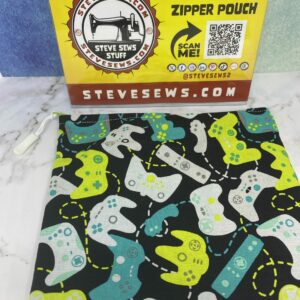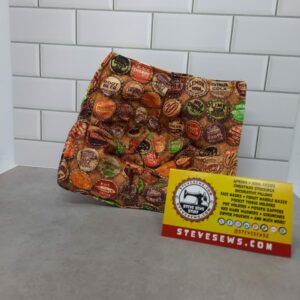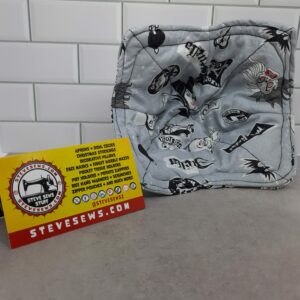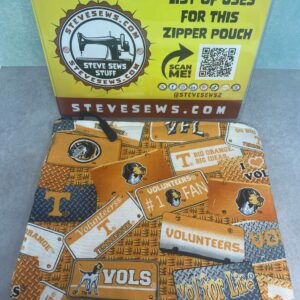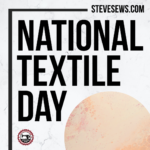Binding in sewing refers to a strip of fabric that is used to encase the raw edges of a garment or other fabric item, giving it a neat and finished appearance. #binding
Binding
Binding is often used to finish edges of quilted items, such as blankets, placemats, or table runners.
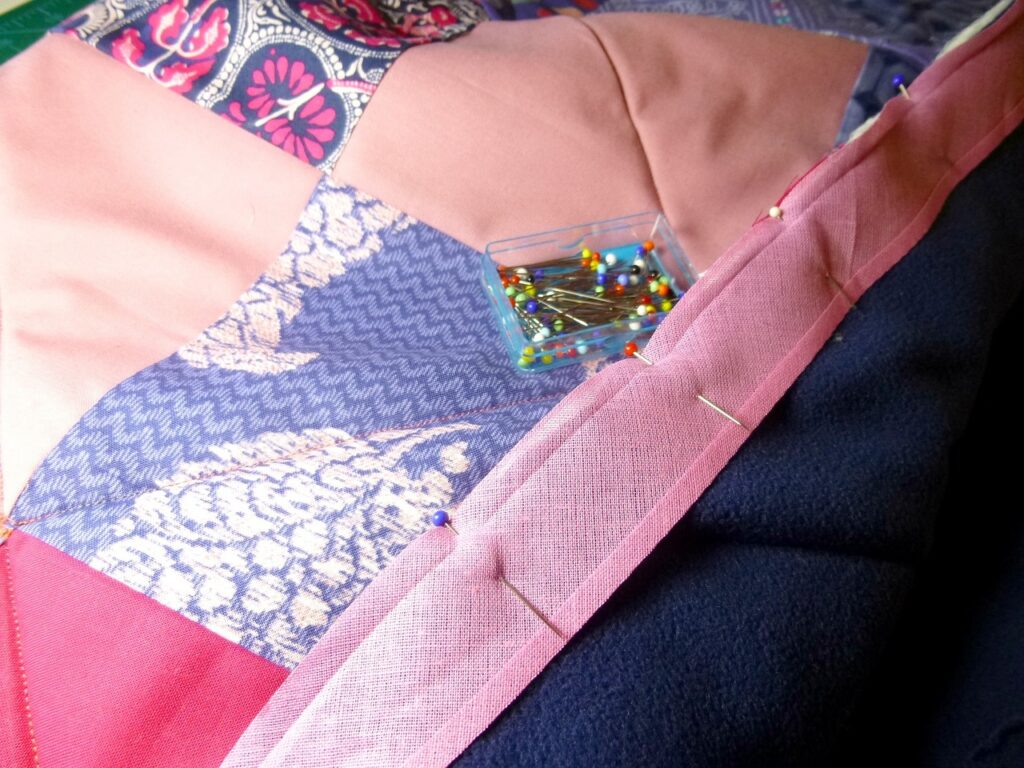
There are two main types of binding used in sewing: bias binding and straight grain binding. Bias binding is cut on the bias, which is a 45-degree angle to the grain of the fabric. This type of binding is more flexible and can be used to finish curves and other irregular shapes. Straight grain binding is cut parallel to the grain of the fabric and is generally stiffer than bias binding, making it a good choice for finishing straight edges.
This sewing method can act like a border on your projects.
To bind an edge, the binding strip is sewn to the edge of the fabric with right sides together, and then folded over to the back side of the fabric and stitched in place. Binding can be sewn by machine or by hand, and can be made from the same fabric as the item being bound, or from a contrasting fabric for a decorative effect.
Not to mention, binding can be made from a variety of materials, such as bias tape, ribbon, or self-fabric, and can be sewn on by machine or by hand.
The basic steps for a raw edge:
- Cut a strip of binding fabric that is wide enough to cover the raw edge and long enough to go around the entire edge with some overlap.
- Fold the binding strip in half lengthwise with the wrong sides together and press to create a crease.
- Align the raw edge of the fabric with the folded edge of the binding strip and pin or clip in place.
- Sew the binding to the fabric with a straight stitch, using the crease as a guide. Leave a small tail of binding at the beginning and end.
- Fold the binding over the raw edge to the back of the fabric and pin or clip in place.
- Stitch the binding to the back of the fabric, either by machine or by hand, using a slip stitch or a blind stitch. Be sure to catch the folded edge of the binding on the back of the fabric, but not the front.
- When you reach the end of the binding, fold the small tail under and stitch in place.
Binding is a useful technique to add a professional finish to your sewing projects and can be used in a variety of applications, such as quilt binding, bias tape binding, and neckline or armhole binding.
What is biased binding
Bias binding is a type of binding used in sewing that is cut on the bias (diagonal) grain of fabric. This means that the binding has more stretch and flexibility than binding cut on the straight grain. Bias binding is commonly used for finishing raw edges of curved areas, such as necklines, armholes, and cuffs, because it conforms easily to the curves without puckering or bunching.
To create bias binding, the fabric is first cut on the bias grain. This is done by folding the fabric at a 45-degree angle from the selvage edge, forming a right triangle. The edge of the fabric where the two sides of the triangle meet is the bias edge, and this is where the bias binding is cut. The binding strip is then cut to the desired width, typically 1 inch or 1.5 inches, and is folded in half lengthwise with the wrong sides together and pressed.
Bias binding can be attached to a garment using a variety of methods, such as by machine or by hand. To attach it by machine, the binding is pinned or clipped to the raw edge of the fabric, right sides together, and sewn with a straight stitch, using the crease as a guide. The binding is then folded over to the back of the fabric and stitched in place, either by machine or by hand.
Bias binding is a versatile technique that can add a decorative touch to your sewing projects, as well as providing a clean and durable finish. It is commonly available in a wide range of colors and prints, making it easy to match or coordinate with your project.
What is straight grain binding
Straight grain binding, also known as single-fold binding, is a type of binding used in sewing that is cut on the straight grain of fabric. Unlike bias binding, which is cut on the diagonal grain, straight grain binding has little to no stretch and is best used for finishing straight edges, such as the edges of quilts or rectangular items.
To create straight grain binding, the fabric is first cut into strips that are 2.5 to 3 inches wide, depending on the desired finished width of the binding. The strips are then joined together at the ends to create a long continuous strip that is long enough to go around the entire edge of the item being bound. The strip is then folded in half lengthwise with the wrong sides together and pressed to create a crease.
To attach straight grain binding to a project, the raw edge of the item is first folded over to the wrong side by a small amount, typically 1/4 inch, and pressed. The binding strip is then pinned or clipped to the raw edge of the item, right sides together, aligning the raw edges. The binding is sewn in place with a straight stitch, using the crease as a guide. When the binding is fully attached, it is folded over to the back of the item and stitched in place, either by machine or by hand.
Straight grain binding is a simple and easy-to-use technique that provides a neat and clean finish to straight edges. It is commonly used in quilting and other sewing projects where a straight edge needs to be finished, and is available in a wide range of colors and prints to match or coordinate with your project.
Upcoming Events
This is a list of the upcoming events that Steve Sews will be at. If you know of one in the East Tennessee area, let me know.
None at this time. Check back later.
Meet …
Meet the staff and/or equipment for Steve Sews.
- Brother Stitch (Current Sewing Machine)
- Forge (Circuit)
- Interns
- Lovees (Stuffed Animals)
- Mendi (My Wife’s Sewing Machine)
- Rosie (Antique Sewing Machine)
- Steve (Steve himself)
- The Masked Bandit (Steve’s older Sewing Machine)
- Trainees
- Van the T-Rex (Helper)
- Zee (Face Mask Model)

SUBSCRIBE TODAY!
Don’t miss a single blog post about sewing, quilting, crafts, and recipes! Plus so much more!
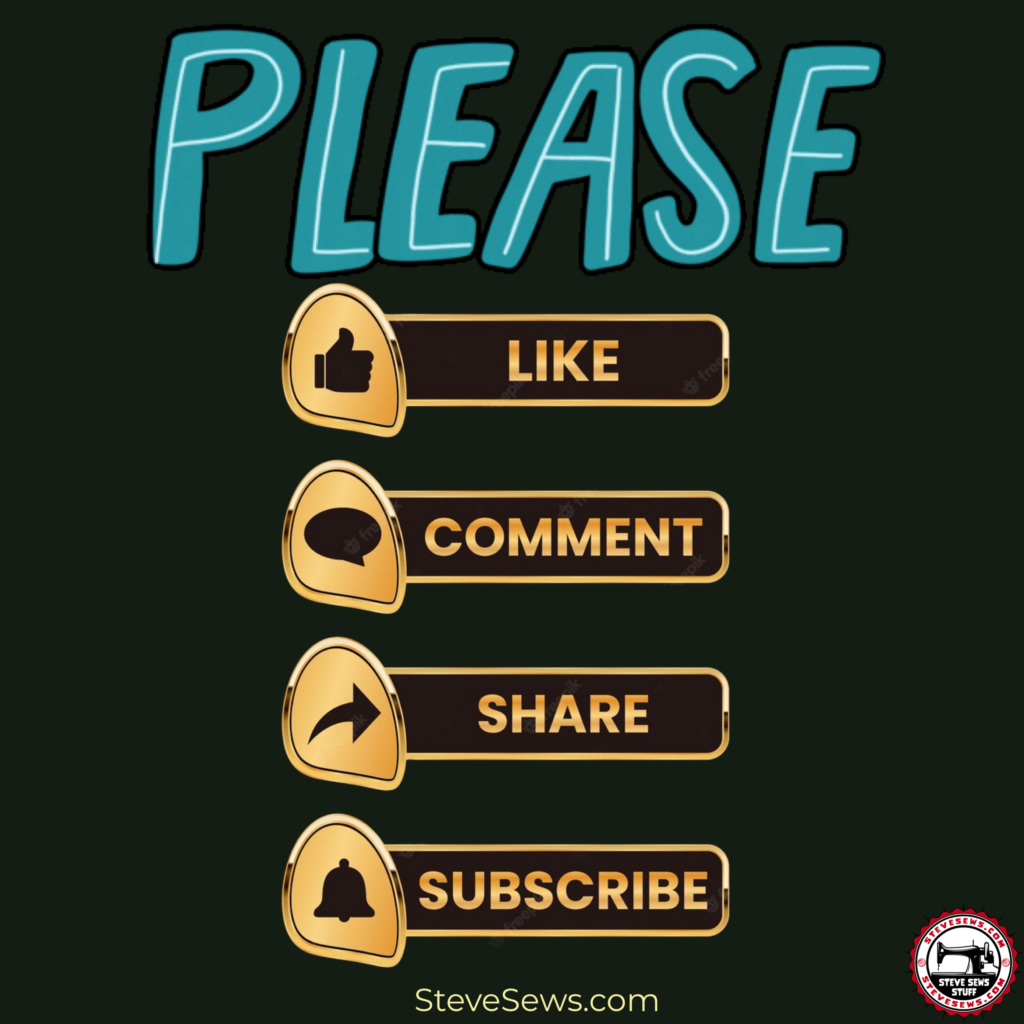
Follow on WordPress
Follow Steve Sews Stuff on WordPress.comFollow Steve Sews Stuff on Social Media:
You can also choose to follow Steve Sews Stuff on social media as well. (@SteveSews2)
Below are some examples of blog entries from all blogs that I do. (Courageous Christian Father, Steve Sews Stuff and SteveZ DesignZ).
Recent Feed of All of Steve’s Blogs
Recent Posts on Steve Sews
Below is a list of the most recent blog posts found on Steve Sews for you to check out.
Clipart: Unsplash, Pixabay, Pexels, Openverse, Adobe Express, Adobe Stock, FreePik, MetroCreative, Wonder AI, Algo AI and more. This site uses Amazon Affiliate Ads & Google Ads.
